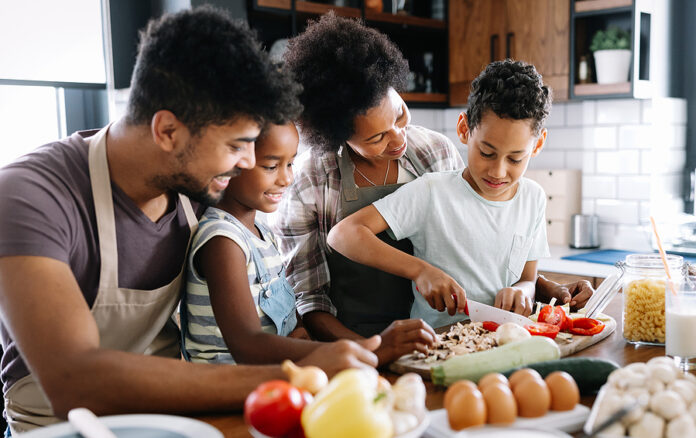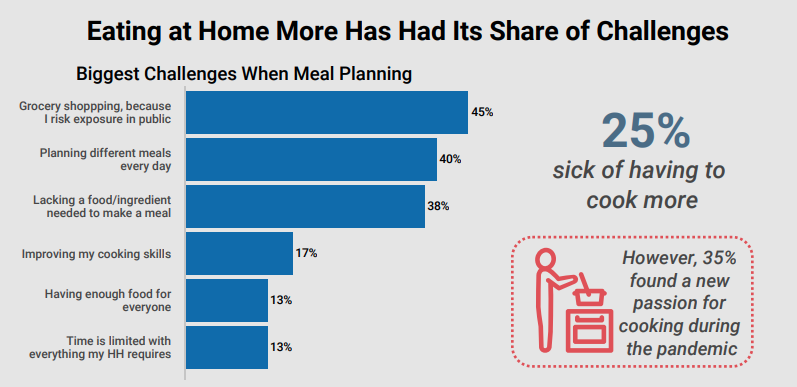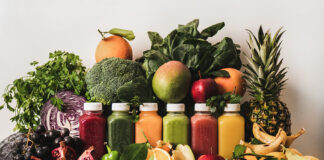
More than half (55%) of people are eating at home more often since the pandemic began, according to a report by Acosta. The data, collected in July, show that while 35% report having found a new passion for cooking, 25% are sick of having to cook more. Regardless of how they feel about it, though, a significant proportion of people expect to continue eating out less post-COVID.
The survey also asked consumers about the biggest challenges associated with eating at home. The results provide some clues for how food manufacturers can better meet their customers’ needs.
To reach customers concerned about the coronavirus exposure risk of grocery shopping, brands can go direct-to-consumer (DTC). While many small, especially specialty, brands have already done this, larger companies like PepsiCo have also started to test out the channel. “This acceleration into the DTC space makes a lot of sense, especially in this uncertain retail environment,” Brad Birnbaum wrote in a recent article for Food Dive. “DTC channels provide a strong opportunity for legacy food and beverage manufacturers to boost growth, especially given looming competition from digitally native vertical brands….”
For the combined challenges of planning different meals every day, improving cooking skills, and limited time, companies can provide quick weeknight recipes. Kraft Heinz has been a leader in this space with initiatives like its recipe site My Food and Family and mobile app Meal Hero.
The Acosta report offers other “manufacturer opportunities in the new normal,” including the following:
- Extend foodservice brands and chef-forward ideas into retail
- Focus on efficacy of packaging by food type
- Execute relevant digital messaging
They say it takes an average of 66 days to form a habit. Since we’re way past that with the pandemic, and most people are still eating at home more than they used to, food brands should take advantage of these opportunities to connect with customers now and into the foreseeable future.










